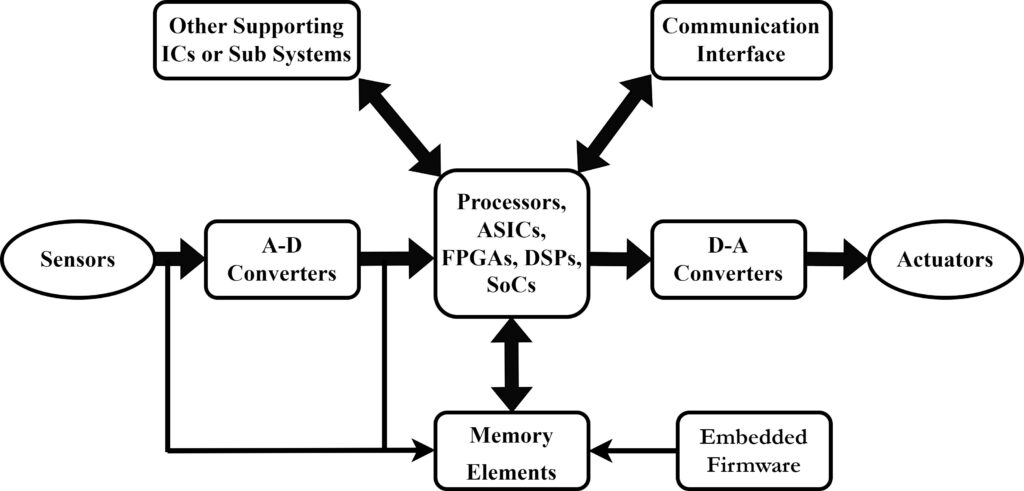Our day-to-day life is becoming more and more dependent on “Embedded Systems” and Digital gadgets. Even without our knowledge, embedded technologies are permeating every aspect of our daily lives. We are habituated to using different devices/ gadgets to simplify our tasks, like refrigerators, washing machines, microwave ovens, air conditioning, television, music systems, etc. In our vehicles, many electronic gadgets and controllers like headlamp controllers, engine controllers, ignition control systems, Anti-lock braking systems (ABS), airbag control systems, etc. are connected for our safety and comfort. Most of the time we are totally unaware or ignorant of these intelligent embedded systems. In this tutorial, our understanding will be expanded to include these intelligent systems, which are essentially embedded systems only.
To understand Embedded Systems, first, we need to know what is a System.
A system is made up of a number of interconnected or interacting parts that operate in accordance with a predetermined set of guidelines to create a cohesive whole.
It is a setup where each unit works together to complete a task while adhering to a set of rules that are computed in real-time. It is also a manner of functioning, organizing, or carrying out a single or a number of tasks in accordance with a predetermined plan.
An Embedded System is a microprocessor or microcontroller or FPGA-based hardware system with software that is designed to perform a dedicated function, either as an independent system or as a part of a large system.
An Embedded System can be defined as an Electronic/Electro-mechanical system designed to perform a specific function and is a combination of both hardware & software.
It can also be defined as a combination of hardware and software which together form a component of a larger machine.
A typical embedded system is composed of three major components:
Hardware is a physically used component that is connected to the embedded system for interaction between the environment and the processing or controlling unit. It consists of sensors, microcontrollers, power supplies, actuators, etc.
Application software enables the user to run a variety of programs on an embedded device by altering the installed code.
RTOS is an operating system intended to serve real-time applications that process data as it is received by the input of an embedded system. It acts as an interface between hardware and application software to perform a few tasks by ensuring that the tasks will always be executed before the deadline.

Fig.1: Components of Embedded Systems
The basic structure of an embedded system includes the following components:
Sensor
A-D Converter
Processors/ ASICs/ FPGAs/ DSPs or SoCs
Memory elements
D-A Converter
Actuator
Fig. 2 shows the basic structure of a typical Embedded System.

Fig.2: Basic structure of a typical Embedded System
A sensor aids in measuring the physical quantity and converting it to an electrical signal. Moreover, it records the measured quantity in the memory. An observer or any electrical device like an A-D converter can prepare this signal.
An A-D converter is an integrated circuit used to transform the analog signal (continuous form) into a digital signal (discrete form).
Memory is a device that is used to store information for immediate use or future use in a system. An Embedded System mainly contains two types of memory units
i) Volatile memory (requires power to maintain the stored information)
ii) Nonvolatile memory (retain the stored information even after the power is removed)
Embedded Firmware:
A sort of flash memory known as embedded firmware is used to store specific software that runs on a chip inside an embedded device to control functionality.
This is the most important unit of an Embedded System. This unit processes the data to measure the output and store it in the memory.
D-A converter (A digital-to-analog converter) helps us to convert the digital data fed by the processor to analog data.
An actuator enables us to verify the D-A converter’s output against the actual output it has stored, and it saves the approved output to memory.